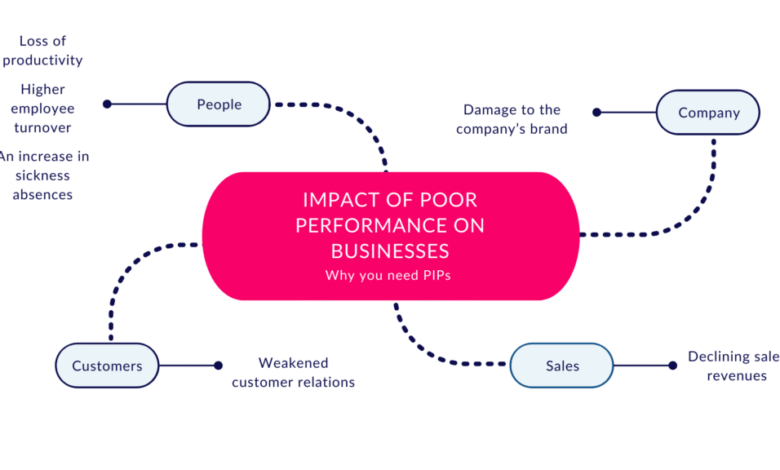Performance Improvement Plan: A Practical Guide to Turning Challenges into Growth

What Is a Performance Improvement Plan (PIP)?
A Performance Improvement Plan, often referred to as a PIP, is a structured document used by managers and organizations to help employees address performance issues. Unlike what some people believe, a PIP isn’t always a punishment or a step before termination. In fact, when done right, it serves as a roadmap for employees to understand expectations clearly and work towards achieving them.
The plan typically outlines specific areas where an employee’s performance is falling short. These areas may include productivity, behavior, skill gaps, or even communication problems. Along with highlighting these issues, the PIP also sets clear, measurable goals and deadlines for improvement. This provides a fair opportunity for employees to take corrective actions.
A well-designed PIP doesn’t just focus on pointing out flaws. Instead, it creates a supportive environment where the employee gets guidance, coaching, and resources to succeed. By setting transparent expectations, both managers and employees can work together towards the shared goal of professional growth and organizational success.
Why Do Companies Use Performance Improvement Plans?

Companies don’t introduce performance improvement plans simply to weed out underperformers. Instead, the main purpose is to give employees a structured chance to get back on track. Every employee can face challenges—whether it’s due to personal struggles, lack of clarity in their role, or changes in workplace dynamics. A PIP helps address these concerns before they escalate further.
One of the biggest advantages for employers is retention. It’s far more cost-effective to support and improve an existing employee than to fire them and hire someone new. Recruitment, training, and onboarding all take time and money. With a PIP, companies show they’re willing to invest in their people rather than dismiss them at the first sign of trouble.
Additionally, using performance improvement plans promotes fairness and accountability. Employees can’t claim they were blindsided by disciplinary actions if they were given a chance to improve through a documented process. This also helps organizations maintain transparency and consistency in their human resource practices.
Common Misconceptions About PIPs
Performance Improvement Plans often come with a stigma. Many employees hear the words “PIP” and instantly assume it’s a polite way of saying, “You’re about to be fired.” While this sometimes happens in poorly managed workplaces, that’s not the true purpose of the plan.
One misconception is that a PIP is purely punitive. In reality, when applied correctly, it’s a developmental tool. It offers employees a second chance to align with the company’s expectations. Another myth is that only struggling employees get a PIP. While that’s usually the case, ambitious companies sometimes use PIPs proactively, even for high performers, to sharpen skills or prepare them for leadership roles.
It’s also worth addressing the fear factor. Many employees feel anxious or defensive when put on a PIP. However, seeing it as an opportunity rather than a threat can make a huge difference. The mindset shift from “I’m in trouble” to “I’m being given a chance to improve” often determines the outcome.
The Key Components of a Strong Performance Improvement Plan
Not all Performance Improvement Plan are created equal. A poorly written one can confuse employees and set them up for failure, while a strong one can empower and motivate. To be effective, a PIP needs to include several essential components.
First, it should clearly identify the performance gaps. This means being specific rather than vague. Instead of saying “your communication is poor,” the plan might say, “You need to provide weekly project updates via email to your team.” Specificity removes ambiguity and gives the employee a clear target.
Second, measurable goals must be set. These goals should follow the SMART framework—Specific, Measurable, Achievable, Relevant, and Time-bound. For example, “Increase sales by 15% over the next 60 days” is measurable, while “do better at sales” is not.
Finally, the PIP should outline available resources and support. This could include training programs, mentorship, coaching sessions, or even adjustments in workload. The more supported an employee feels, the higher their chances of succeeding in the plan.
How Managers Should Approach a PIP
A Performance Improvement Plan is only as good as the manager implementing it. If a manager treats it like a formality or a threat, employees will likely disengage. Instead, managers should approach the process with empathy and open communication.
The first step is framing the conversation positively. Rather than starting with “You’re underperforming,” a manager can say, “I see potential in you, and I’d like to support you in reaching it.” This sets a collaborative tone rather than a confrontational one.
Follow-up is equally important. A PIP isn’t something to hand over and forget. Managers should schedule regular check-ins to track progress, provide feedback, and make adjustments if needed. Consistent communication builds trust and reassures the employee that their growth truly matters.
Lastly, managers should remain fair and objective. A PIP should never be used as a tool to push out employees for personal reasons. If the goals are reasonable and the support is genuine, the plan becomes a win-win for both parties.
How Employees Can Succeed in a Performance Improvement Plan
Being placed on a PIP can feel intimidating, but it’s far from the end of the road. In fact, many employees use the experience to grow and come out stronger than before. Success largely depends on mindset and strategy.
The first step for employees is to take the plan seriously. Performance Improvement Plan Instead of resisting or becoming defensive, they should see it as constructive feedback. This means carefully reviewing the outlined goals and asking questions if anything feels unclear. The more clarity they have, the easier it is to focus on achieving results.
Next, employees should take initiative. Waiting passively for managers to check in isn’t enough. Proactively updating progress, seeking extra support, and demonstrating commitment goes a long way in changing perceptions. Employers notice when someone goes above and beyond to improve.
Finally, employees should treat the PIP as an opportunity to develop long-term skills. Even if the process feels stressful, the lessons learned—time management, accountability, or communication improvements—will serve them throughout their career.
The Potential Outcomes of a PIP
A performance improvement plan can have several outcomes, depending on how it’s managed and how the employee responds. Ideally, the best-case scenario is success. The employee meets or even exceeds the expectations, proving they can rise to the challenge. This often restores confidence from both sides and strengthens long-term commitment.
Another possible outcome is partial improvement. Sometimes employees make progress but don’t fully reach the goals within the timeframe. In such cases, managers may extend the plan or reassign the employee to a role better suited to their strengths.
Of course, not all PIPs end positively. If an employee fails to show improvement despite having the resources and support, termination may follow. While this is never pleasant, it ensures the organization maintains performance standards. On the bright side, employees can also use the experience as a wake-up call to seek roles that better fit their skills and passions.
Why a PIP Benefits Both Employers and Employees
When executed correctly, performance improvement plans are not just about fixing problems; they’re about building stronger organizations. For employers, it’s a chance to develop talent, improve productivity, and reduce turnover costs. For employees, it’s an opportunity to grow, learn new skills, and demonstrate resilience.
The collaborative nature of a PIP strengthens trust between management and staff. It shows that the company values its people enough to invest in them rather than replace them hastily. At the same time, employees gain clarity about their role and performance expectations, which can eliminate workplace misunderstandings.
Ultimately, a PIP fosters a culture of accountability and continuous improvement. By normalizing feedback and providing structured paths for growth, organizations can create workplaces where challenges are seen not as threats, but as stepping stones to success.
Final Thoughts
A performance improvement plan isn’t something to fear—it’s something to embrace. Whether you’re a manager drafting one or an employee placed on one, the key is to approach it with the right perspective. With clarity, communication, and commitment, a PIP can turn a struggling situation into a success story.
Instead of seeing it as a final warning, think of it as a professional reset button. It’s a chance to reflect, refocus, and realign your efforts. In today’s fast-paced workplace, adaptability and growth are invaluable traits, and a PIP gives both sides a framework to achieve them.
So, the next time you hear the term “Performance Improvement Plan,” don’t think of it as a negative label. Think of it as a structured opportunity to improve, grow, and ultimately, succeed.



